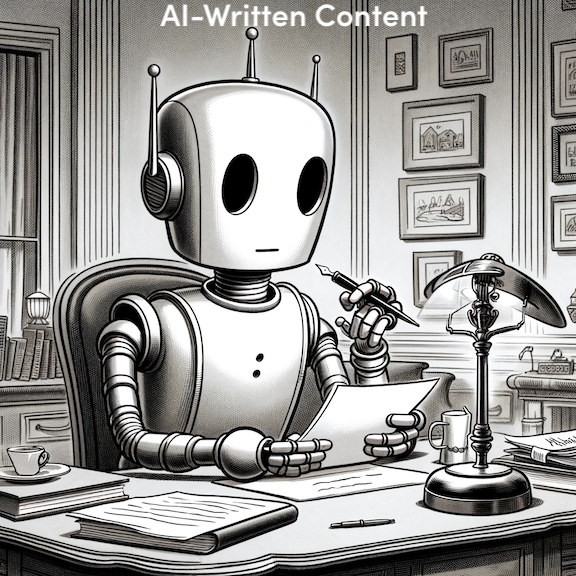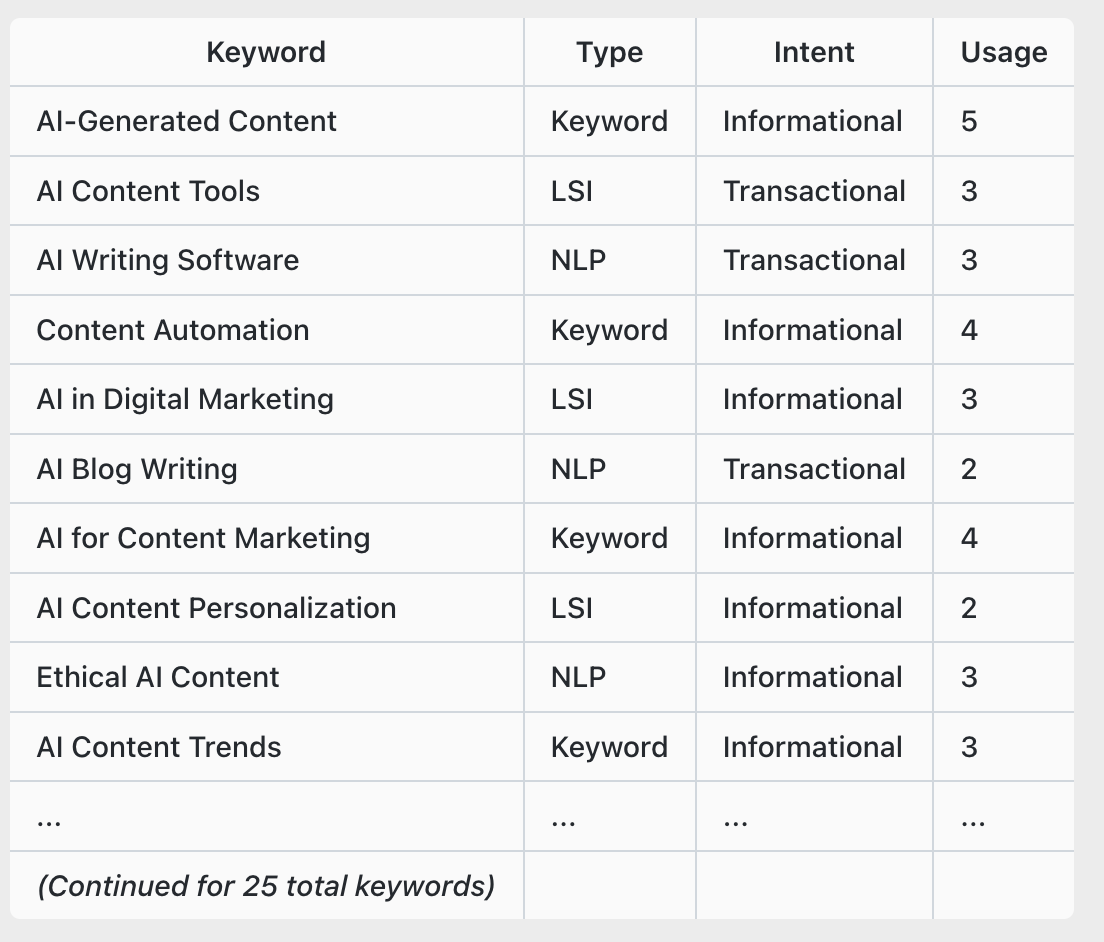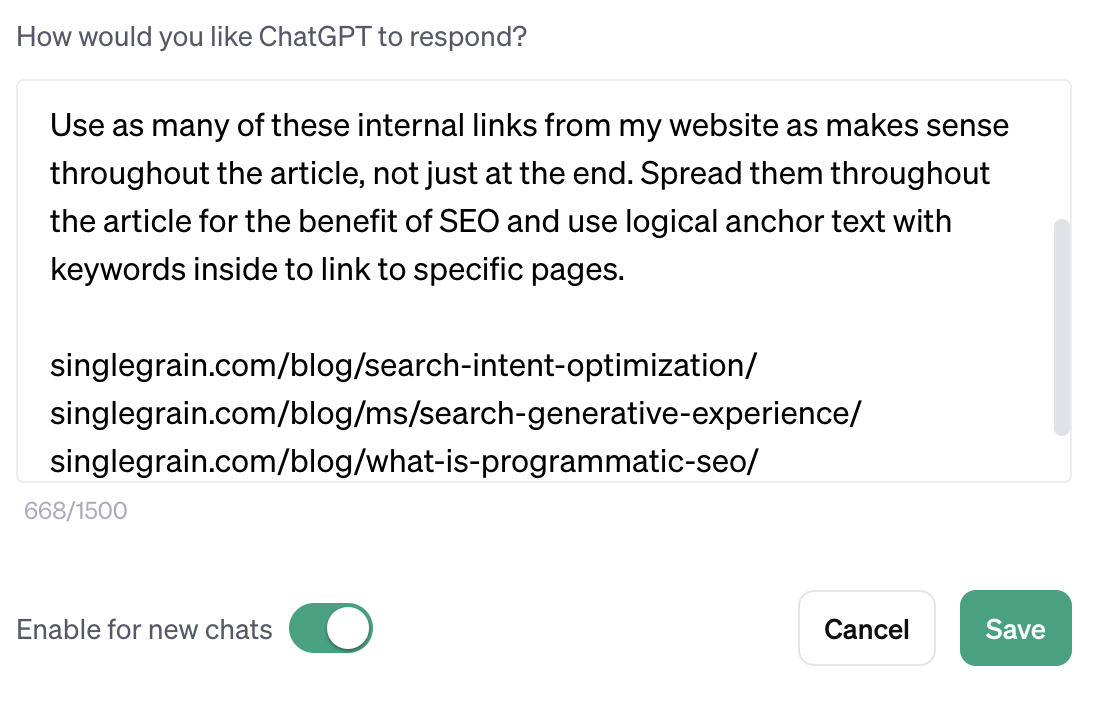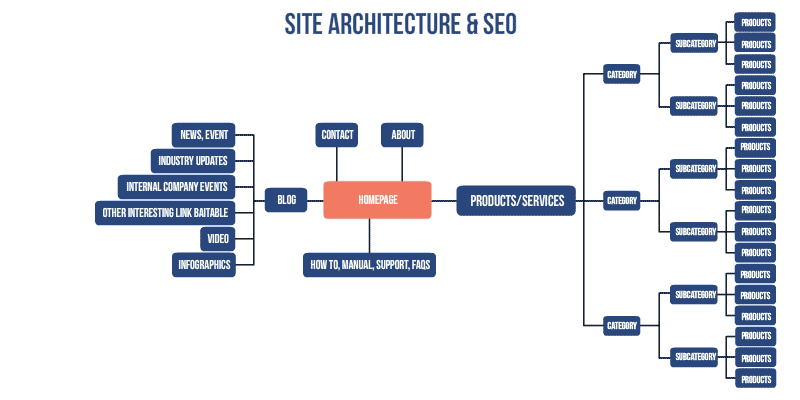AI has revolutionized content creation by consistently delivering a wide variety of written materials. Through advanced natural language processing algorithms and machine learning, AI systems have become adept at generating articles, essays, marketing copy, and much more.
These systems analyze vast datasets, mimic human writing styles, and adapt to specific tones and objectives, enabling them to craft content that engages, informs, and persuades.
A lot of people think AI-written content equals or exceeds human-written content, making these tools the new go-to solution for businesses needing blogs and marketing articles.
But does that really mean AI is capable of producing high-quality content? Continue reading to learn all about AI and writing.
Their expertise has helped Nextiva grow its brand and overall business
Is AI Capable of Producing High-Quality Content?
When it comes to AI-assisted content:
- 65.8% of people find AI content equal to or better than human writing
- 63% of people are concerned about AI-generated content because of potential bias or inaccuracies
- 35% of businesses have adopted AI
- 85.1% of AI users use the technology for article writing and content creation
- 20% of marketers think AI tools will have a negative impact on content quality
- 72.6% of people are concerned about AI content becoming indistinguishable from human-written content
So, does this mean AI can fulfill various roles, including making high-quality content? The answer isn’t so easy. There are a lot of pros and cons of AI for content writing:

Many arguments exist for and against AI’s ability to produce content that converts.
On one hand, AI is solid in spelling and grammar, which is perfect if you need to produce error-free content for your first draft. AI writing tools are also efficient which means that writers can produce more content faster. Most AI writers can produce different types of written material for all niches, making this tool useful for writers of all backgrounds.
However, AI isn’t the best option if you want to create unique text, such as a differing argument on a common subject in your industry. It’s also not very good at being really creative and sounding individualistic from other ChatGPT-written content. Some tools, such as ChatGPT, have limited knowledge since its database has no facts occurring after April of 2023.
Benefits of Using AI for Content Writing
Since 12% of businesses use AI for content creation, it’s safe to say that these tools offer several benefits. From ideation to outlines, it can lend a huge hand in the creative process and organizing topics.
Here are some of the key advantages:
- Efficiency and productivity
- Consistency
- Time-saving
- Cost-effective
- Scalability
- Data-driven insights
- Multilingual content
- Reduced errors
- Content ideation
- Content optimization
- Content type variety
- 24/7 availability
- Fast research capabilities
- Some tools like ChatGPT work with DALL-E to create images👇

It might feel like AI has been making waves since November of 2022, and while it’s true that large language models like ChatGPT have helped usher in the new age of AI into people’s everyday vocabulary, it’s been an iterative technology for decades.
We’re only just seeing the tip of the iceberg with what AI can accomplish for businesses both on an analytical and technical level as well as a creative level.
In just a single year, we have seen major iterations to AI tools like the introduction of Google Bard and aspects of Google’s search results interface through Search Labs’ search generative experience (SGE).
But even though the horizon for AI is seemingly endless, there are still some obvious warts that content creators ought to be cautious of with most AI tools on the market currently.
Downsides of Using AI for Content Writing
It’s important to note that while AI can be a valuable tool for content creation, it is not a replacement for human creativity, critical thinking, and expertise (for now anyway). The best results often come from a collaborative approach where AI assists human writers in producing high-quality content.
Additionally, human oversight is essential to ensure that AI-generated content aligns with the brand’s values and objectives.
It’s also important to be aware of these limitations when considering the use of AI in content creation:
- Lack of creativity
- Quality control
- Inadequate research
- Unintended bias
- Loss of human touch
- Limited understanding of context
- Overuse and dependence
- Ethical concerns
- Content ownership and plagiarism
- Initial investment and learning curve
- Technology dependence
- Limited content types
- Human relevance
How to Use AI in Your Content Writing Campaign
Integrating AI into your content writing campaign can enhance efficiency, consistency, and productivity:

Here’s a step-by-step guide on effectively using AI in your content writing efforts.
1) Narrow in on Search Intent
Using AI writing tools to address search intent is a valuable strategy for optimizing your content for search engines and delivering what users seek.
Here’s how you can effectively use AI writing tools for this purpose:
- Keyword research

- Content generation
- Title and meta description optimization
- Content structure
- Keyword placement
- Content optimization
- User engagement metrics
- User feedback
- Competitor analysis
- Regular updates
Incorporating AI writing tools into your content strategy to address search intent not only improves your chances of ranking well in search engine results but also enhances the user experience by providing valuable and relevant content:
2) Construct and Expand Pillar Content
Creating pillar content is an effective content marketing strategy to establish your authority on a specific topic and improve your website’s SEO. AI writing tools can be a valuable asset in generating and enhancing pillar content.
Here’s how to use AI writing tools for this purpose:
- Topic selection: Identify a broad topic or theme relevant to your niche or industry. Use AI-powered content research tools (Semrush, Ahrefs, BuzzSumo) to analyze trends, keywords and user interests to determine a suitable pillar topic.
- Content ideation: Use AI content generation tools (ChatGPT, Jasper, Writesonic) to generate content ideas and subtopics related to your pillar content. These tools can help you brainstorm relevant angles and angles to cover within your pillar piece.
- Research assistance: AI can gather data and information from various sources. Use AI-powered research tools (IBM Watson Discovery, Google Cloud AI Platform, Sisense) to extract statistics, facts, and insights that can be incorporated into your pillar content.
- Content creation: Write the main pillar content using AI writing tools (INK Editor, CopyAI, KoalaWriter). AI can assist in generating a comprehensive and well-structured piece by suggesting headings, subheadings, and content outlines. It can also maintain consistency in tone and style throughout the article.
- Keyword optimization: Use AI SEO tools to identify relevant keywords and phrases related to your pillar content (Moz Pro, Serpstat, Ahrefs). Ensure these keywords are strategically placed in the content to improve SEO and visibility.
- Semantic analysis: AI-driven semantic analysis tools can help you identify related keywords and phrases to include in your pillar content (SurferSEO, Clearscope, Semrush’s Topic Research Tool). This improves the comprehensiveness of the piece and makes it more informative.
- Content structure: AI like ChatGPT can assist in creating a clear and organized structure for your pillar content. Ensure that the content flows logically, with headings and subheadings that make it easy for readers to navigate.
- Quality assessment: After using AI to generate the initial draft, review and edit the content to ensure it meets high-quality standards. AI-generated content may require human refinement for style, tone, and accuracy.
- Internal and external links: Include relevant internal links and external links within your pillar content to provide additional context and resources. AI like ChatGPT or Google Bard can help identify suitable sources to link to within your content:

- CTAs and engagement: Use AI to create effective calls to action (CTAs) that encourage readers to engage with your content. Whether signing up for a newsletter, sharing the article, or exploring related content, AI can help craft persuasive CTAs.
- Promotion strategy: Develop a promotion strategy for your pillar content, including social media promotion, email marketing, and outreach to influencers or relevant communities. AI tools can assist in scheduling and automating some of these promotional tasks.
When you use the right AI writing tools at various stages of creating pillar content, you can streamline the content creation process, improve its quality, and enhance its relevance to your target audience.
Just remember that content creation shouldn’t be solely left up to AI, as it will often lack the personality and flare of human touch (not to mention outright made-up facts and plagiarized chunks of content). And the worst part is that people will notice when content is too densely AI-written. You don’t want that.
3) Optimize Content Through Programmatic SEO
Programmatic SEO uses automated processes and algorithms to optimize a website’s SEO strategy. AI writing tools can play a significant role in programmatic SEO by assisting with content creation, optimization, and data analysis.
Here’s how to use AI writing tools for programmatic SEO:
- On-page SEO optimization
- Automated internal linking
- Backlink analysis
- Technical SEO
- Algorithm updates
By integrating AI writing tools into your programmatic SEO strategy, you can automate many of the routine tasks associated with SEO, allowing your team to focus on more strategic and creative aspects of your digital marketing efforts.
As grand as this all sounds (and for the most part, it is), programmatically generated pages for SEO through AI can be a double-edged sword if handled improperly.

While programmatic SEO or “pSEO” can save a ton of time, it can lead to a density of poor-quality pages if the formula you design isn’t scalable, productive for users, and receptive to search engines.
When you automate scaling your content, you must regularly update that content or the overall rankings of your site will decline over time.
Here are the steps we use to devise a repeatable and scalable pSEO plan:
A) Prioritize Page Quality
Creating hundreds or thousands of pages programmatically comes with a challenge: maintaining quality. As you scale up, you’re likely to encounter issues with thin content. Here are some quick tips to address this:
- Readability: Ensure that your content is easily digestible.
- Page Speed: Optimize loading times for a seamless user experience.
- Page Design: Craft visually appealing pages for user engagement.
- Google’s Quality Guidelines: Adhere to Google’s standards to enhance search visibility.
If you find pages lacking in these aspects, consider deleting them and removing them from the index. Alternatively, refine your criteria for publishing pages to uphold quality standards.
B) Harness the Power of Internal Linking
Internal links play a crucial role in helping search engines navigate your site. Ignoring this aspect is a disservice to your SEO efforts.

To streamline internal linking at scale:
- Use ChatGPT: Upload a CSV of your essential pages and leverage ChatGPT to identify optimal spots for internal links.
- Integrate into Workflow: Make internal linking a part of your content creation process, allowing editors to implement the suggested changes.
Remember, a well-structured internal linking strategy enhances the discoverability of your content across search engines.
C) Overcome Content Updating Challenges
Maintaining updated content across numerous pages is a common challenge. Here’s a practical approach:
- Contextual Updates: Extract context from each page and display short summaries of recent content related to that context. For instance, link to recent YouTube or podcast content related to the page’s theme.
- Dynamic Updates: Ensure that pages dynamically update with new content so that you keep them relevant.
- Human Editorial Touch: Assign human editors to manually update high-priority pages for a personalized touch.
This strategy not only keeps your content fresh, but also contributes to a positive conversion rate optimization (CRO) perspective.
D) Embrace a Gradual Release Strategy
While the idea of releasing a vast number of pages simultaneously may seem enticing, a more methodical approach is often effective:
- Keyword Selection: Instead of targeting thousands of keywords initially, focus on around 250 high-intent keywords.
- Avoid Overly Long-Tail Keywords: Steer clear of overly specific long-tail keywords to prevent the creation of thin content.
- Monitor Performance: Start small and scale up gradually as you observe positive results.
Remember, most websites don’t require an extensive keyword portfolio from the outset. A strategic, measured approach sets the foundation for long-term success in programmatic SEO.
Combining AI and Writing: Final Thoughts
Writing AI tools can deliver an endless supply of content, aiding a company’s content marketing and SEO campaigns. But is AI-written content high quality?
AI and writing has its benefits and drawbacks. You can type in a prompt and receive a whole article in seconds, making the writing process more efficient. At the same time, solely using AI tools in content writing can be challenging because machine learning needs the human touch to be creative and resonate with audiences.
There are still ways you can integrate AI into the writing process while still using human insight. AI can identify search intent and create specific content types, such as pillar posts and programmatic SEO tactics.
In short, AI assistance can benefit your strategy by optimizing your content quicker, but you owe it to yourself and your audience to maintain a human element if you want our content to maintain good quality.
If you’re ready to level up your content with AI tools, Single Grain’s AI experts can help!👇
For more insights and lessons about marketing, check out our Marketing School podcast on YouTube.


